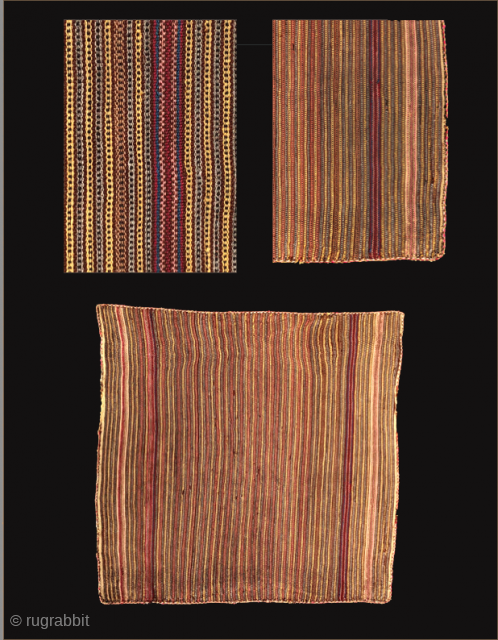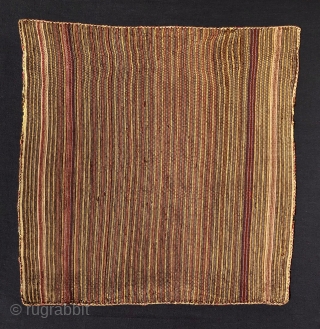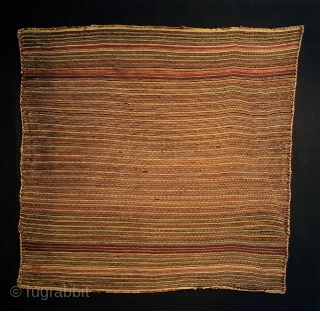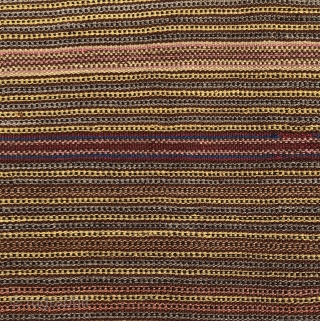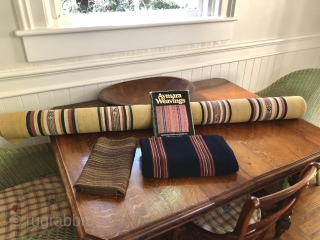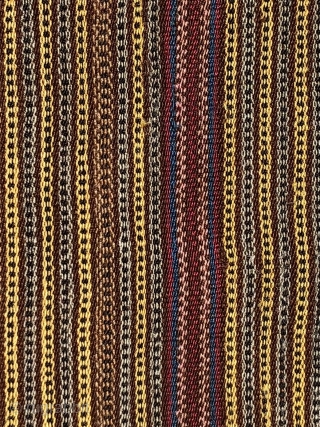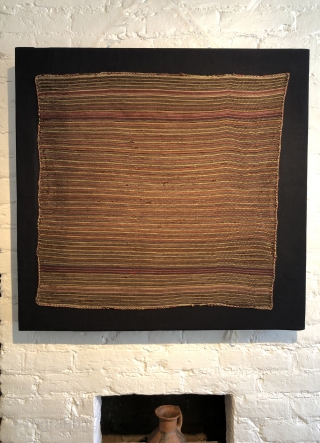Back
It is not easy to replicate the essence of this textile in the images that follow. Aymara textiles are often just too fine to capture in the macro view. But, take my word for it - it is a special, soulful piece with a solid pedigree. a little history… i originally purchased this piece in 1980 in the early days of Aymara weaving collecting in the us. It was the first of its type to show up on the market. Some years later Cathryn Cootner acquired it from my collection. Cathy as most of you probably know was the curator in charge of the textile collection at the de Young Museum in San Francisco. She was as enthusiastic as i was about Aymara textiles that were just beginning to appear on the American market - primarily in California. She and i just happened to be in the right place at the right time as to access to the material and we tried to keep it just between ourselves as great things began to show up here. When this textile came in, it was essentially a one of a kind example - an as yet unknown type. However, as is often the case - not long after it found an audience - others began to trickle out. The market for Aymara textiles in those days was very small – a micro market really. Antique Aymara textiles were basically unknown and there were only a handful of collectors and dealers who were aware of how good they were or that they even existed. This was ok because as it turns out there were never really enough of them to go around much less make a big market. The remarkable quality and beauty of Aymara textiles was first brought to the attention of the outside world in the Smithsonian traveling exhibition and catalog of 1983 - Aymara Weavings – Ceremonial Textiles of Colonial and 19th century Bolivia. Over time this particular piece has held up as one of the earliest of a distinctive group of such pieces. Used as a ground cloth for offerings and to present and wrap sacred coca leaves in ancient rituals, this example has deep roots in the indigenous Aymara culture of the Lake Titicaca basin. Its distinctive patterning technique is seen in textiles going back for more than a 1500 years in the region. This example probably dates to the early 19th century or before. i could go on with my discussion but this will have to wait for a later edit or another time. Feel free to contact me for more information if you are interested. There is a lot more to say about this soulful old piece. It is a solid and rare collectable example. Recently cleaned. Size 27 x 25.5 inches.
price:
Inquire
- Home
- Antique Rugs by Region
- Category
- Profiles
- Post Items Free
- Albums
- Benaki Museum of Islamic Art
- Budapest: Ottoman Carpets
- Gulbenkian Museum
- Islamic Carpets. Brooklyn
- Islamic Textiles. Brooklyn
- Konya Museum: Rugs
- MKG, Hamburg
- MMA: Caucasian Carpets
- MMA: Mamluk Carpets
- MMA: Mughal Indian Carpets
- MMA: Ottoman Carpets
- MMA: Safavid Persian Carpets
- MMA: Turkmen Rugs
- McCoy Jones Kilims
- Ottoman textiles. Met
- Philadelphia Museum
- Rugs and Carpets: Berlin
- Seljuqs at the Met
- TIEM, Istanbul: Carpets
- V&A: Classical Carpets
- Vakiflar Carpets: Istanbul
- Baluch Rugs: Indianapolis
- Gallery Exhibitions
- Jaf an Exhibition
- Alberto Levi Gallery
- Andean Textile
- Christie's London: 2016
- Francesca Galloway
- HALI at 40
- ICOC Washington, DC 2018
- Jajims of the Shahsavan
- London Islamic Week April, 2018
- Mongolian Felts
- Navajo Rugs: JB Moore
- Persian Piled Weavings
- SF Tribal & Textile Art Show 2020
- SF Tribal 2019
- Sotheby's: C. Alexander
- Turkish Prayer Rugs
- Turkmen Main Carpets ICOC 2007










